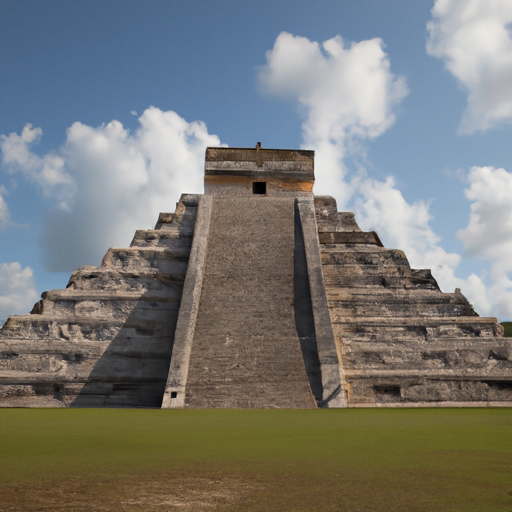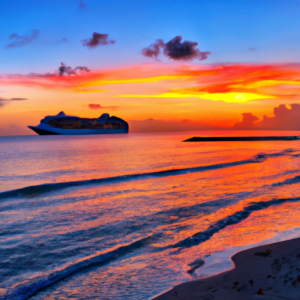Embark on a thrilling expedition through time as you unravel the mysteries surrounding the magnificent ancient Mayan ruins. Delve into the secrets of the Mayan civilization, alongside the enigmatic Aztec and Incan cultures, as you explore their awe-inspiring archaeological wonders. This captivating journey invites you to discover the accessible sites of these ancient civilizations, offering a unique opportunity to learn about their fascinating history, all conveniently located near popular cruise stops. Get ready to be transported to a world of ancient wonders and embark on a voyage like no other.
Table of Contents
ToggleUnraveling the Mysteries: Exploring Ancient Mayan Ruins
Introduction to the Mayan Civilization
Welcome to the fascinating world of the ancient Mayan civilization! The Mayans were a complex and advanced society that thrived in Mesoamerica from around 2000 BC to 1500 AD. Known for their remarkable achievements in architecture, agriculture, mathematics, and astronomy, the Mayans left behind a rich legacy that continues to captivate the imaginations of people all over the world. In this article, we will delve into the significance of ancient Mayan ruins and explore some of the most popular and intriguing sites.
Significance of Ancient Mayan Ruins
The ancient Mayan ruins hold immense importance in understanding the culture and history of one of the most sophisticated civilizations of the ancient world. These archaeological sites provide valuable insights into the religious beliefs, social structures, and artistic endeavors of the Mayan people. By studying the ruins, archaeologists and historians have been able to unravel the mysteries of the Mayan calendar, decipher ancient hieroglyphs, and gain a deeper understanding of their complex civilization. The ruins also serve as a powerful reminder of the resilience and ingenuity of the Mayan people.
Popular Mayan Ruins to Explore
1. Chichen Itza
Chichen Itza, located in the Yucatan Peninsula of Mexico, is undoubtedly one of the most iconic and famous Mayan ruins in the world. Designated as a UNESCO World Heritage site, Chichen Itza offers a glimpse into the grandeur and sophistication of the Mayan civilization. The site is home to several impressive structures, each with its own unique history and cultural significance.
1.1 History of Chichen Itza
Chichen Itza was initially inhabited by the Mayans around 600 AD and reached its peak during the Terminal Classic period (900-1200 AD). It was a major political, religious, and economic center, serving as a hub for trade and pilgrimage. The city’s decline began around the 13th century, and by the time the Spanish arrived, it was largely abandoned.
1.2 Notable Structures in Chichen Itza
One of the most famous structures in Chichen Itza is the magnificent El Castillo, also known as the Temple of Kukulkan. This pyramid-like structure is an architectural marvel, with its precise alignment and design that creates a fascinating visual phenomenon during the equinoxes. Other notable structures include the Great Ball Court, the Temple of Warriors, and the Observatory.
1.3 Cultural Significance of Chichen Itza
Chichen Itza was not only a political and economic center but also a place of great religious significance. The site is filled with symbolism and intricate carvings that depict Mayan mythology and rituals. The sacred cenote, known as the Cenote Sagrado, played a vital role in Mayan religious ceremonies, and countless offerings have been discovered within its depths.
2. Tikal
Nestled deep within the rainforests of Guatemala, Tikal is another remarkable Mayan ruin that shouldn’t be missed. This ancient city was one of the most powerful kingdoms of the Mayan civilization and boasted a population of over 100,000 people at its peak.
2.1 Historical Background of Tikal
Tikal’s history dates back to the 4th century BC, and it flourished during the Classic period (250-900 AD). The city was strategically located at the heart of the Mayan world and served as a major political and cultural center. Tikal’s influence extended far and wide, and it was often engaged in fierce rivalries with other Mayan city-states.
2.2 Prominent Features of Tikal
Tikal is known for its towering pyramids and magnificent temple complexes. The Great Plaza, surrounded by impressive structures such as Temple I and Temple II, provides a glimpse into the grandeur of Mayan architecture. The Great Jaguar Temple, also known as Temple IV, offers a spectacular view of the surrounding jungle from its summit.
2.3 Excavation and Research at Tikal
Archaeologists have conducted extensive excavation and research at Tikal, unearthing tombs, stelae, and various artifacts that shed light on the city’s history and its interactions with neighboring Mayan states. The ongoing excavations continue to reveal new insights into the daily life, rituals, and political landscape of this ancient Mayan city.
3. Palenque
Nestled amidst lush forests in the state of Chiapas, Mexico, Palenque is another captivating Mayan ruin that transports you back in time. This archaeological site boasts some of the most exquisite examples of Mayan architecture and artistry.
3.1 Overview of Palenque’s History
Palenque flourished during the Late Classic period (600-900 AD) and was ruled by a series of powerful kings. The city’s golden age is attributed to the renowned ruler Pakal the Great, whose tomb was discovered within the Temple of the Inscriptions in 1952.
3.2 Architectural Marvels in Palenque
Palenque’s architecture is renowned for its intricacy and attention to detail. The Temple of the Inscriptions is a remarkable structure with its hieroglyphic inscriptions and mural paintings that depict the life and achievements of Pakal the Great. The Palace, with its multiple courtyards and elegant facades, showcases the architectural mastery of the Mayans.
3.3 Art and Symbolism in Palenque
Palenque is also famous for its stunning artwork, which features intricate carvings, murals, and sculptures. The Mayan art found at Palenque portrays mythological scenes, deities, and important historical events. The most iconic artwork is the sarcophagus lid of Pakal the Great, which is adorned with rich symbolism and has sparked many interpretations.
4. Tulum
Perched on the cliffs overlooking the turquoise waters of the Caribbean Sea, Tulum stands as a testament to the Mayans’ ingenuity in choosing defensive locations for their cities.
4.1 Introduction to Tulum
Tulum was a thriving Mayan port city during the Postclassic period (1200-1500 AD). Its strategic position allowed the Mayans to control regional trade, making it an essential center for commerce and exchange.
4.2 Preservation Efforts at Tulum
Tulum has been remarkably well-preserved compared to other Mayan ruins. This is due in part to the limestone used in its construction, which has withstood the test of time. Efforts have also been made to conserve and protect the site through ongoing restoration projects.
4.3 Religious and Political Significance of Tulum
Tulum was not only a bustling trading hub but also a place of worship and political importance. The Temple of the Frescoes, adorned with vibrant murals, depicts the Mayan cosmology and religious practices. The Castillo, Tulum’s iconic pyramid, served as a lighthouse and a place of ceremonial significance.
5. Copan
Deep within the lush mountains of western Honduras lies Copan, an ancient Mayan city renowned for its intricate sculptures and hieroglyphic inscriptions.
5.1 Origins and Development of Copan
Copan’s history spans over 2,000 years, with the city experiencing its peak during the Classic period (400-800 AD). It was a major center of art, astronomy, and political power, boasting a highly skilled population.
5.2 Sculptures and Hieroglyphs in Copan
Copan is celebrated for its exceptional stelae, altars, and sculptures, which are adorned with elaborate hieroglyphic inscriptions. These inscriptions provide valuable information about the city’s rulers, rituals, and historical events. The Hieroglyphic Stairway is a particularly awe-inspiring feature, with its intricate carvings stretching over 60 steps.
5.3 Understanding Copan through Archaeological Discoveries
Archaeological excavations at Copan have unearthed vast treasures, including tombs of powerful rulers and intricate ceremonial structures. Researchers continue to piece together the puzzle of Copan’s history, using these discoveries to deepen our understanding of the city’s dynasties, socio-political structures, and artistic achievements.
Exploring Mayan Ruins Off the Beaten Path
1. El Mirador
For those seeking a truly off-the-beaten-path Mayan adventure, El Mirador in Guatemala offers a unique and awe-inspiring experience.
1.1 Isolated Beauty of El Mirador
El Mirador remains largely untouched by modern development, allowing you to immerse yourself in the untamed beauty of the jungle. The site is characterized by massive temples and pyramids scattered amidst dense vegetation, creating a sense of mystery and exploration.
1.2 Challenges and Excitement of Exploring El Mirador
Exploring El Mirador requires a certain level of physical stamina and a sense of adventure. The journey to the site involves trekking through dense jungle, crossing swamps, and camping under the starlit sky. This rugged experience, however, is rewarded with the sheer awe of discovering the towering structures and the sense of being a true explorer.
2. Calakmul
Hidden deep within the jungles of Campeche, Mexico, Calakmul offers a remote and enchanting experience away from the crowds.
2.1 Remote Location and Natural Surroundings of Calakmul
Calakmul’s isolation contributes to its charm and allure. Surrounded by dense tropical rainforest, the site immerses you in a world teeming with wildlife, including exotic birds, monkeys, and jaguars. The sounds of the jungle create a symphony that accompanies your exploration.
2.2 Rediscovery and Restoration of Calakmul
Calakmul remained largely unknown until the late 1930s when it was rediscovered by archaeologists. Since then, ongoing restoration efforts have unveiled the grandeur of this Mayan city. The central acropolis, adorned with stelae and monumental structures, highlights the architectural brilliance of the Mayans.
2.3 Rediscovering Lost Maya King of Calakmul
Excavations at Calakmul have revealed the tomb of a powerful Mayan ruler, one who was heavily involved in political conflicts and alliances with other Mayan cities. The discovery of this tomb shed new light on the intricate web of relationships and power dynamics within the Mayan civilization.
3. Yaxchilan
Located deep in the jungles of Chiapas, Mexico, Yaxchilan offers a glimpse into the ancient Maya’s artistic and cultural achievements.
3.1 Overview of Yaxchilan’s Location and History
Yaxchilan sits on the banks of the Usumacinta River, which served as a vital trade route for the Mayans. The city thrived during the Classic period and was known for its grand architecture and intricate artwork.
3.2 Majestic Structures and Artwork in Yaxchilan
The temples and palaces of Yaxchilan are a testament to the sophistication of Mayan architecture. Intricately carved lintels and stelae tell stories of royal bloodlines, mythological tales, and historic events. The Acropolis Group, in particular, showcases the mastery of stone carving and the complexity of Mayan iconography.
3.3 Becoming Acquainted with Yaxchilan’s Culture
Yaxchilan also offers a glimpse into the cultural practices and rituals of the Mayans. The Ballcourt, where the ancient ballgame was played, and the Labyrinth, a maze-like structure with hidden chambers, evoke a sense of mystery and wonder. Exploring Yaxchilan allows you to immerse yourself in the rich tapestry of Mayan culture.
Conclusion: The Rich Legacy of the Ancient Mayan Ruins
As you embark on your journey to explore the ancient Mayan ruins, you will be stepping into a world steeped in history, mystery, and wonder. From the iconic sites like Chichen Itza and Tikal to the lesser-known gems like El Mirador and Calakmul, each ruin has its own unique story to tell. As you wander through the remnants of the Mayan civilization, you will gain a deeper appreciation for their immense achievements and the enduring legacy they left behind. So grab your backpack, put on your explorer hat, and embark on a truly unforgettable adventure into the heart of the Mayan world.





